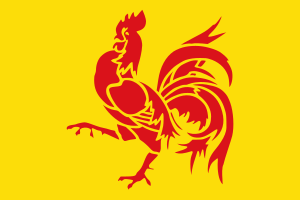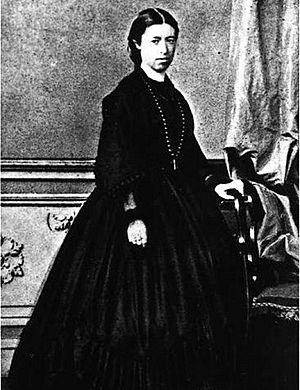Union des femmes de Wallonie facts for kids

The Union des Femmes de Wallonie (which means "Union of Women of Wallonia") was a group in Belgium. It was started in 1912 by Léonie de Waha, with help from Marguerite Delchef. The main goal was to get women interested in the culture and politics of Wallonia, a region in Belgium.
At first, the Union encouraged women to help bring back Walloon traditions, like its language and old stories. After the First World War, the group focused more on women's rights. In the 1930s, they worked for women's right to vote, better education, and more job chances for women. They also published a magazine called La Femme wallonne from 1920 to 1936. This magazine often supported women's rights and challenged old ideas about what women should do.
Contents
The Story of the Union of Women of Wallonia
The Union was officially started on October 28, 1912. This happened shortly after a letter from Jules Destrée to the king, suggesting that Wallonia and Flanders should be separate. It also followed the creation of the Assemblée wallonne (Walloon Assembly).
How the Union Started and Grew
Léonie de Waha, an educator, became the president of the Union. Marie Defrecheux, a headmistress, was the vice-president, and Marguerite Delchef, a language expert, was the secretary. The Union wanted to encourage women to get involved in developing Wallonia's cultural traditions.
Before the First World War, the Union set up a committee for social work. They also held many talks and published a quarterly magazine. During the war, the group kept going, but mostly in the Liège area.
Changes After World War I
After the war ended, the Union changed its rules and expanded its goals. They now aimed to protect French culture and support women's education in arts and thinking. They also wanted to keep the memory alive of the terrible things that happened during the war.
Women's Rights and Work in the 1920s and 1930s
In the early 1920s, women were allowed to vote in local elections. Political parties encouraged them to take part. Even though women couldn't vote in bigger elections yet, posters asked them to influence their husbands' votes.
The Union kept encouraging women to work, even when many men were losing their jobs. For example, in 1926, Marie Delcourt wrote an article in La Femme wallonne about this. By 1934, a big economic crisis caused even more job losses. A Catholic senator, Georges-Ceslas Rutten, suggested limiting women's work in factories and offices. Delcourt wrote another article, arguing that employers wanted to fire women to get men's votes. She believed the only solution was to give women the right to vote in all elections.
The Union faced challenges in the late 1930s. However, Marguerite Delchef brought it back to life after the Second World War. The Union continued its work until 1955.


